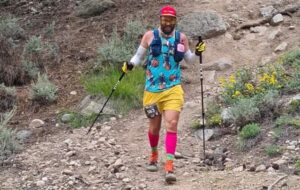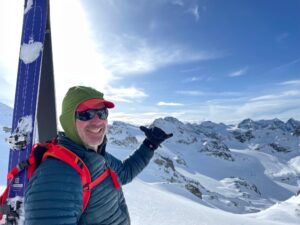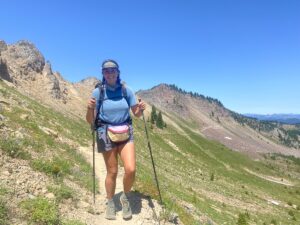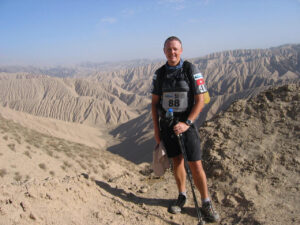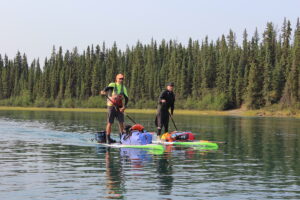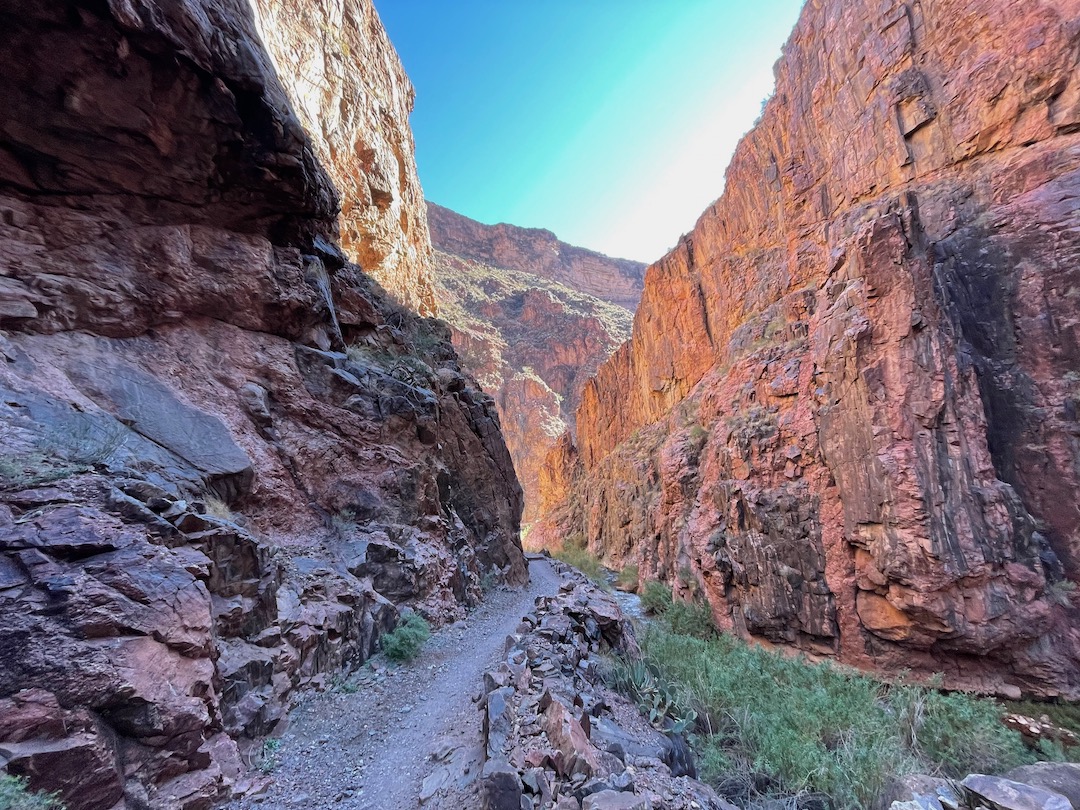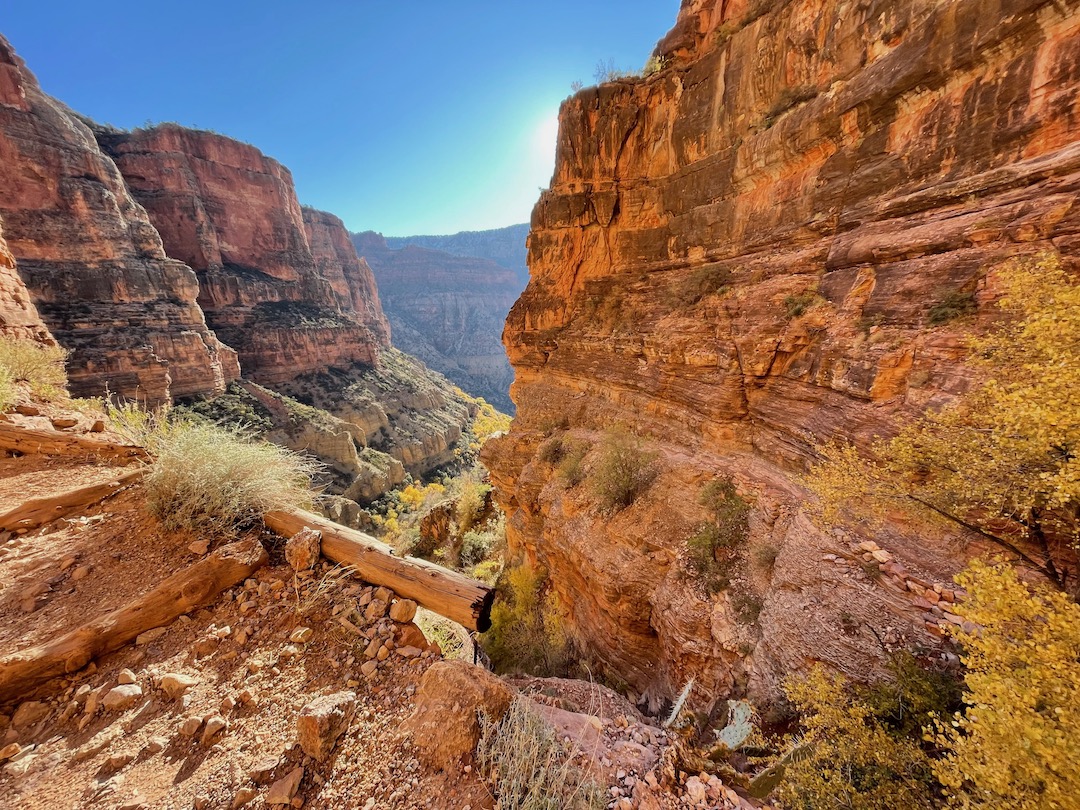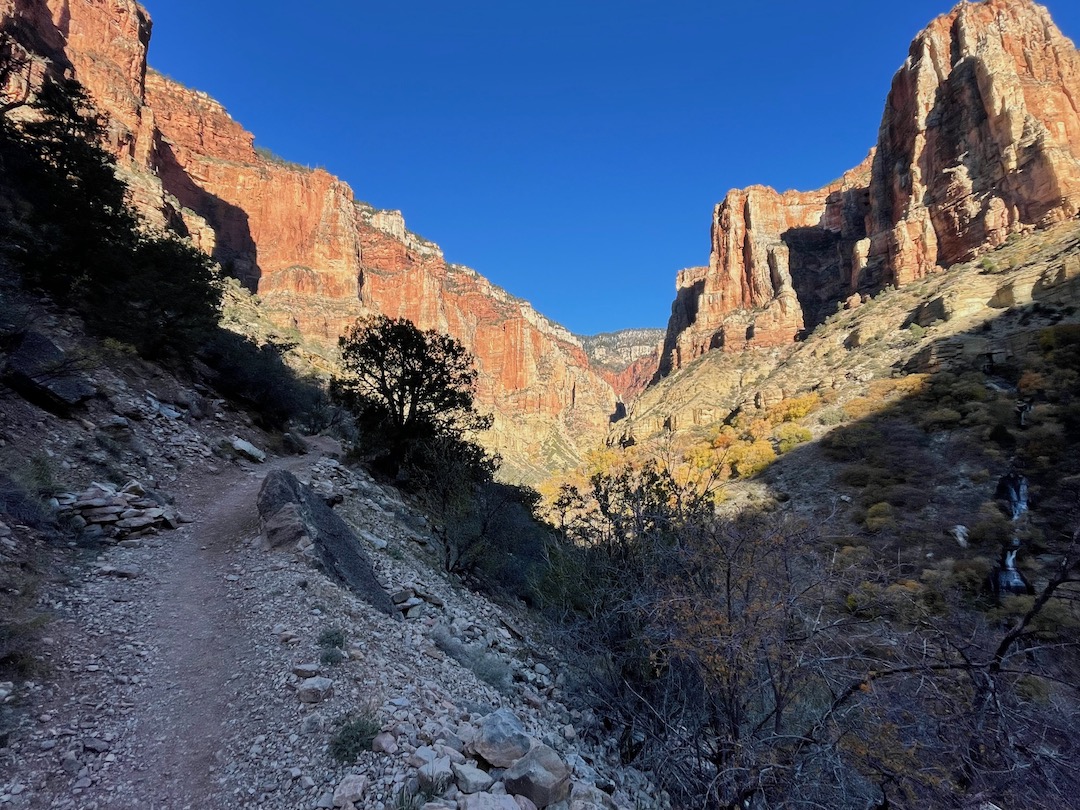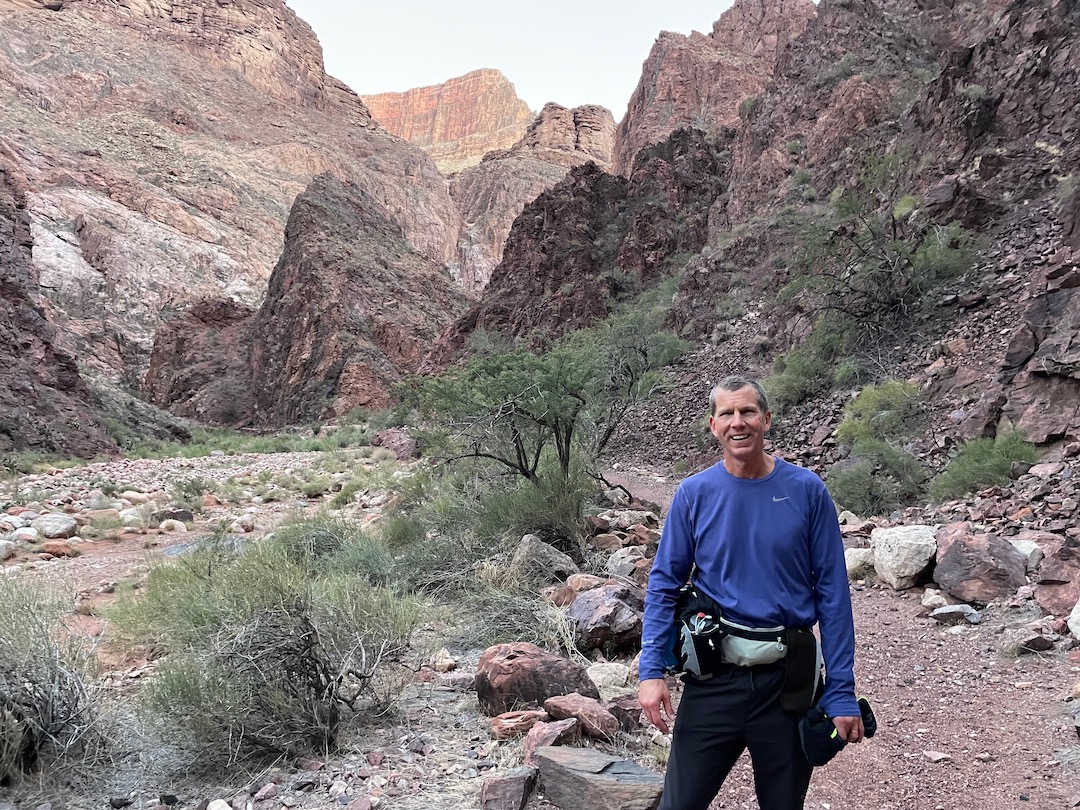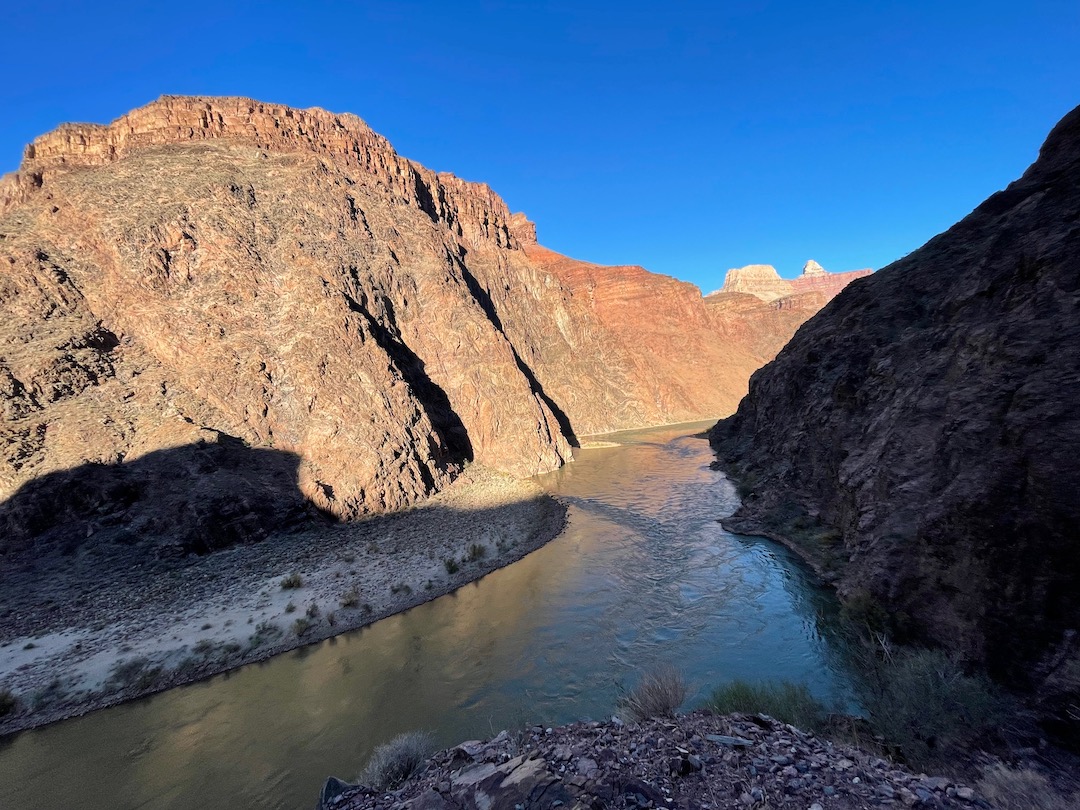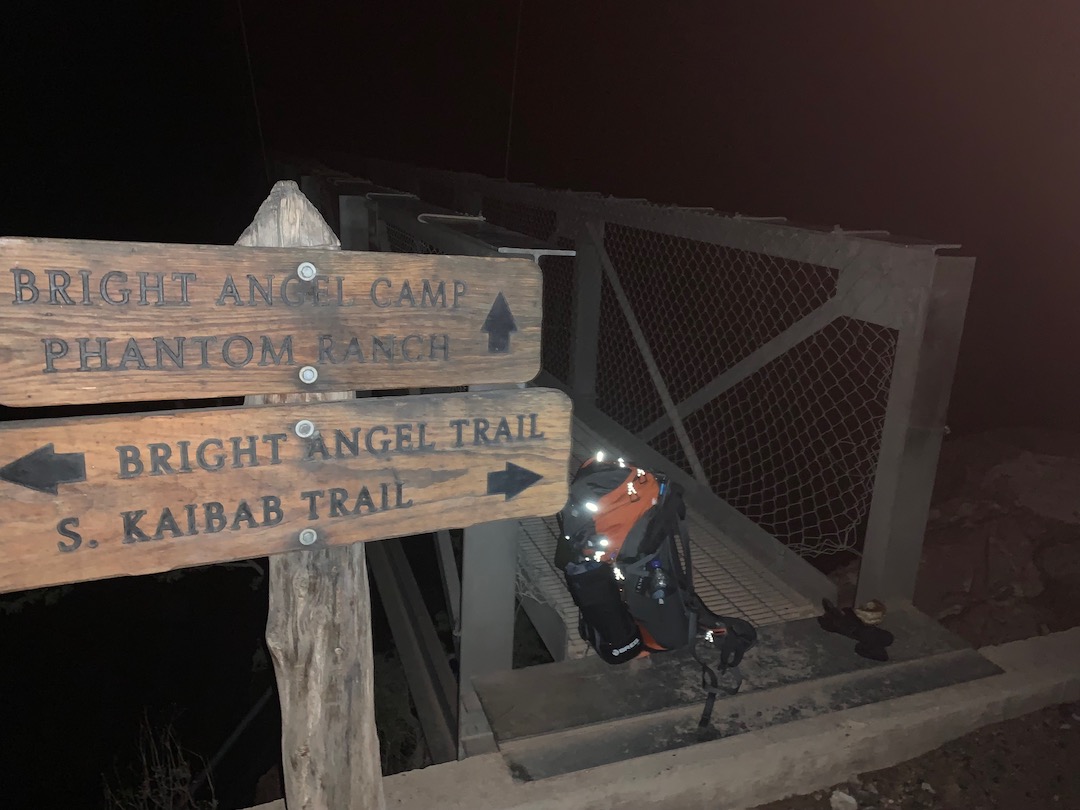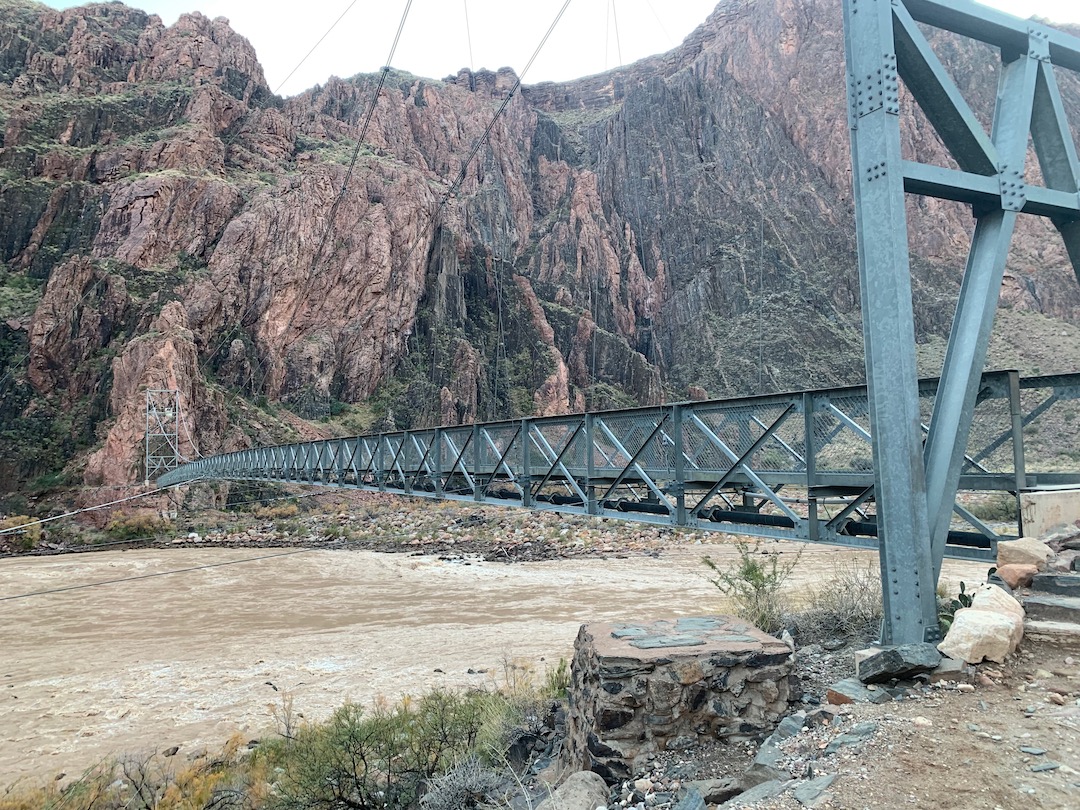My Adventure: by Dale Simonson
The final glow of daylight faded as I crossed the Colorado River on the Silver Bridge near Phantom Ranch and started up the Bright Angel Trail back to the South Rim of the Grand Canyon and the warm comfort of the bed I had left at 3 a.m. to embark on my first Grand Canyon Rim-to-Rim-to-Rim hike. I felt surprisingly good. No blisters. No particular muscle soreness. But wow, was I feeling weak. My legs kept moving one step in front of another, but they felt like noodles. The issue, I suspected, was more one of low blood sugar than actual muscle fatigue, but I had zero appetite for the remaining food in my pack. After 16 hours of hard physical exercise, my digestive system had pretty much shut down. So I did the only think I could – I turned on my headlamp and continued to climb the 4,400 vertical feet back my hotel at the Grand Canyon Village.
The scenery was disorienting. The sky straight above was ablaze with stars, but the canyon rim created a jagged edge of blackness, below which the walls seemed to swallow any trace amounts of light that might have illuminated my path. My headlamp cast a bobbing tunnel of light in front of me that disappeared into a black void at every turn of the switchbacks as I climbed. And above and below me, the bright specs of a few other hikers’ headlamps gave an odd sense of camaraderie as they periodically came in and out of view. Those lights could have been fireflies just a few feet in front of me, or spotlights miles away. The inkiness distorted any sense of distance. I simultaneously felt large in my own tiny bubble of light, and tiny in the massive expanse of the pitch black canyon.
I can’t recall when or where I read about the Grand Canyon Rim-to-Rim-to-Rim hike, but I remember immediately thinking I just had to do it. For the scenery, for the challenge, and for the curiosity. The roundtrip consists of 43 miles, 12,000 feet of elevation gain, and the same in elevation loss. I had never done anything this physically challenging before, but committing to a non-stop hike in both directions solves two problems associated with hiking the Grand Canyon. Those who want to break the hike up into stages, with lodging or camping in the handful of designated sites in the Canyon require a reservation that can be very challenging to obtain given the high demand and limited availability. And those who want to bite off just the Rim-to-Rim hike face the logistical hassle of the 200+ mile drive between the north and south rim trailheads. No permit is required when hiking straight through roundtrip so the ease of planning had appeal.
My first roundtrip was in November of 2019. It took 20 hours, starting at the Bight Angel Trail on the South Rim, going down to Phantom Ranch by the Colorado River, proceeding up the North Kaibab Trail to the North Rim, and then returning. Not knowing what to expect, I found myself over-prepared with a backpack that weighed in at nearly 20 pounds. The second time I did the hike, in November 2022, I finished the same route in 15.5 hours thanks to better conditioning and a much lighter load.
Advice to Others:
My short and simple advice is to go do this hike. The world has few – if any – destinations as epic and famous as the Grand Canyon. The scenery is stunning. And despite it being the second-most visited national park in the U.S., once you drop below the rim, it’s almost as if you have the entire canyon to yourself – at least if you start your hike at 3 a.m. like I did.
My more involved advice is to make sure you’re fit enough for this ultra-strenuous hike, and know what you’re doing. The National Park Service has better things to do than provide search and rescue operations for dumb people who get themselves into dumb situations. And that rescue flight could set you back $20,000 or more. My recommendation is start with lesser hikes or races, and gradually build up to longer, more challenging routes at the edge of your comfort level and ability. That way, you get to know your body and what true physical fatigue (versus psychological fatigue) feels like and how you can address it mid-hike. Be sure you’re in sufficient shape to run a reasonably fast marathon and still have fuel in your tank. And do more than just pound out the miles on flat pavement. It’s a rough, and at times steep, trail. So work on a lot of leg strengthening with squats, lunges, side lunges, calf-lifts and ankle exercises. Solid core strength goes a long way in preventing injuries and improving endurance as well. Additional advice includes:
– October / November is a great time to do this hike. It avoids the summer heat, but won’t likely have much snow.
– It’s generally best to start and end on the South Rim where there are more facilities.
– The North Rim road and visitor center is closed in the winter so that’s another reason to start on the South Rim.
– Check on back-country information with the park rangers regarding trail conditions and water availability.
– Bring lots of water, and know where you can refill (upper-elevation water is turned off in winter months).
– Be prepare to emergency bivouac if necessary.
– Arranging lodging on the South Rim (e.g. in the Grand Canyon Village area) simplifies logistics and provides immediate comfort and rest after completing the hike.
– Expect temperature differences of >30 degrees F between the top and bottom of the canyon.
– Take lots of photos.


